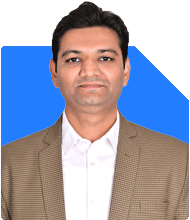Ramalingam Kalirajan |9758 Answers |Ask -Follow
Mutual Funds, Financial Planning Expert - Answered on Jul 03, 2024
He has an MBA in finance from the University of Madras and is a certified financial planner.
He is the director and chief financial planner at Holistic Investment, a Chennai-based firm that offers financial planning and wealth management advice.... more

Hi, I am 43 and am planning for an early retirement in next 3-5 Years. My goal is to have an earning of 6 Lacs per month as retirement money. Currently I have only made investments in real estate and own 5 flats (4 Cr, 3 Cr, 3 Cr, 3Cr, 2 Cr) worth 15 crores including 4 Cr big house where I live and and want to shift to a smaller house. I have a monthly rental income of 1.6 lacs and can raise it to 2 lacs by shifting to a smaller house. I have 40 lacs in FD as liquidity. I have never invested in stock market but am learning the trend of few blue chip stocks for last 2 years. How can I reach to a retirement income of 6 lacs from present 2 lacs, without minimal properties set offs?
Understanding Your Financial Goals
Your main financial goal is to generate Rs 6 lakhs per month post-retirement. You currently have:
Real Estate Investments: Worth Rs 15 crores.
Rental Income: Rs 1.6 lakhs per month (potential to increase to Rs 2 lakhs).
Fixed Deposits: Rs 40 lakhs.
Interest in Stock Market: Observing blue-chip stocks for two years.
Evaluating Your Current Financial Situation
Real Estate Investments:
5 flats worth Rs 15 crores.
Rental income of Rs 1.6 lakhs per month, potential increase to Rs 2 lakhs.
Liquidity:
Fixed Deposits: Rs 40 lakhs.
Increasing Your Monthly Income
1. Diversify Your Investments
While real estate is a solid investment, diversification can help achieve higher returns. Let's explore other investment options.
A. Mutual Funds
Mutual funds are a great way to diversify your investments. They offer professional management and potential for higher returns.
Equity Mutual Funds: Invest in stocks of various companies. They offer higher returns but come with higher risk.
Large Cap Funds: Invest in well-established companies.
Mid Cap Funds: Invest in medium-sized companies with growth potential.
Small Cap Funds: Invest in smaller companies with high growth potential.
Hybrid Funds: Invest in both equity and debt instruments.
Balanced Advantage Funds: Dynamic allocation between equity and debt.
Aggressive Hybrid Funds: Higher allocation to equities.
B. Systematic Investment Plan (SIP)
SIPs allow you to invest a fixed amount regularly in mutual funds. This helps in rupee cost averaging and compounding returns over time.
C. Debt Funds
Debt funds invest in fixed income securities. They provide stable returns with lower risk compared to equity funds.
Short-Term Debt Funds: Suitable for an investment horizon of 1-3 years.
Long-Term Debt Funds: Suitable for an investment horizon of 3-5 years.
2. Stock Market Investments
Since you've been observing blue-chip stocks, consider investing in them. Blue-chip stocks are shares of well-established companies with a history of reliable performance.
Direct Equity Investment: Invest directly in stocks of blue-chip companies. This requires a good understanding of the market.
Equity Mutual Funds: If you prefer professional management, invest in equity mutual funds focusing on blue-chip companies.
3. Public Provident Fund (PPF)
PPF is a government-backed scheme offering attractive interest rates and tax benefits. It has a lock-in period of 15 years, making it suitable for long-term investments.
Invest up to Rs 1.5 lakhs per year: Maximize your investment to avail tax benefits under Section 80C.
4. Fixed Deposits and Debt Funds
While fixed deposits offer security, they have lower returns. Diversify by investing in debt funds for better returns with moderate risk.
Debt Mutual Funds: Suitable for short to medium-term goals. They offer better returns compared to fixed deposits.
Generating Passive Income
To reach your goal of Rs 6 lakhs per month, focus on generating passive income through various channels.
A. Rental Income
Maximize your rental income by renting out your current house and shifting to a smaller house. This will increase your rental income to Rs 2 lakhs per month.
B. Dividend Income
Invest in dividend-paying stocks and mutual funds. Dividends provide regular income in addition to capital appreciation.
C. Interest Income
Invest in fixed income securities like bonds and debentures to generate regular interest income.
Risk Management
Diversifying your investments helps in managing risks. Here’s how you can balance your portfolio:
Equity Investments: 50% allocation in mutual funds and direct stocks.
Debt Investments: 30% allocation in debt mutual funds and fixed income securities.
Real Estate: 20% allocation in real estate investments.
Regular Review and Adjustment
Financial planning is dynamic. Regularly review and adjust your investments based on market conditions and your financial goals.
Annual Review: Review your financial plan at least once a year.
Adjust Investments: Adjust your investments based on changes in your financial goals, market conditions, and risk tolerance.
Tax Planning
Maximize tax-saving investments to reduce your tax liability and boost your savings.
Section 80C: Invest in PPF, EPF, ELSS, and other tax-saving instruments to avail tax benefits under Section 80C.
Section 80D: Avail tax benefits on health insurance premiums under Section 80D.
Insurance Planning
Adequate insurance coverage is essential to protect your family’s financial future.
Term Insurance: Provides financial security to your family in case of your untimely demise. Ensure your coverage is sufficient to cover your family’s needs.
Health Insurance: Covers medical expenses and protects your savings. Consider a family floater plan to cover yourself and your dependents.
Power of Compounding
The power of compounding works best when you start early and stay invested for a long time. The interest earned on your investments gets reinvested, which in turn earns more interest. This cycle continues, leading to exponential growth of your investment over time.
Final Insights
Achieving your retirement goals requires disciplined saving and investing. Here are some final insights to help you stay on track:
Start Early: The earlier you start investing, the more time your money has to grow.
Be Disciplined: Stick to your investment plan and avoid unnecessary expenditures.
Diversify: Diversify your investments to manage risk and ensure steady returns.
Seek Professional Advice: Consult a Certified Financial Planner (CFP) for personalized financial advice.
By following this comprehensive financial plan, you can ensure a secure and comfortable retirement.
Best Regards,
K. Ramalingam, MBA, CFP,
Chief Financial Planner,
www.holisticinvestment.in
You may like to see similar questions and answers below
Ramalingam Kalirajan |9758 Answers |Ask -Follow
Mutual Funds, Financial Planning Expert - Answered on Jun 18, 2024
Ramalingam Kalirajan |9758 Answers |Ask -Follow
Mutual Funds, Financial Planning Expert - Answered on Jul 17, 2024
Ramalingam Kalirajan |9758 Answers |Ask -Follow
Mutual Funds, Financial Planning Expert - Answered on Jul 23, 2024
Ramalingam Kalirajan |9758 Answers |Ask -Follow
Mutual Funds, Financial Planning Expert - Answered on Jul 25, 2024
Ramalingam Kalirajan |9758 Answers |Ask -Follow
Mutual Funds, Financial Planning Expert - Answered on May 15, 2025
Nayagam P P |8987 Answers |Ask -Follow
Career Counsellor - Answered on Jul 18, 2025
Nayagam P P |8987 Answers |Ask -Follow
Career Counsellor - Answered on Jul 18, 2025
Nayagam P P |8987 Answers |Ask -Follow
Career Counsellor - Answered on Jul 18, 2025
Nayagam P P |8987 Answers |Ask -Follow
Career Counsellor - Answered on Jul 18, 2025
Nayagam P P |8987 Answers |Ask -Follow
Career Counsellor - Answered on Jul 18, 2025
Nayagam P P |8987 Answers |Ask -Follow
Career Counsellor - Answered on Jul 18, 2025
Nayagam P P |8987 Answers |Ask -Follow
Career Counsellor - Answered on Jul 18, 2025
Nayagam P P |8987 Answers |Ask -Follow
Career Counsellor - Answered on Jul 18, 2025
Nayagam P P |8987 Answers |Ask -Follow
Career Counsellor - Answered on Jul 18, 2025
Vipul Bhavsar |97 Answers |Ask -Follow
Tax Expert - Answered on Jul 18, 2025



















